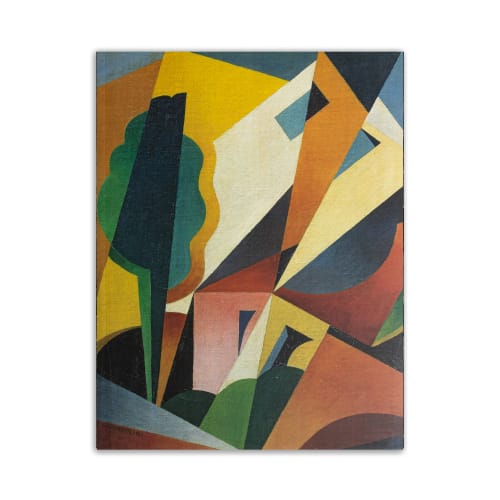Dimensions: 26.5 x 20.5 cm
Pages: 21
Artistic life in Paris during the first half of the twentieth century was characterised by an explosion of creativity, establishing it again as the world's centre stage for avant-garde art. Among the movements making up the avant-garde of 1910-1950 were Cubism, Futurism, École de Paris, Surrealism, and Abstraction.
Cubism is a generic name that has been given to a varied range of art produced between 1907 and the mid 1920s. Its vocation was to create 'tableaux-objets', freeing the artist from the use of traditional perspective in the process. Picasso and Braque were the first to develop this break with the European tradition of illusion and recreate reality in an impersonal and objective way by dissecting the third dimension, in order to be able to project it on the two-dimensional surface of the canvas. 1911 saw the spread of Cubism beyond the circle of Picasso and Braque, when the style became publicly known at the Salon des Indépendants. New adherents of Cubism formed a distinct group - amongst them, represented in this collection, were Albert Gleizes, Jean Metzinger and André Lhote.
Around the same time, Léopold Survage developed his use of colour to create purely abstract paintings whose shapes and forms originated from his imagination. This style of painting, a pioneering form of Abstraction, was closely related to music and is called Orphism.
Simultaneously with the development of Cubism and the pioneering of Abstraction, Paris witnessed a migration of Eastern European artists, who sought to liberate themselves from the provincial or academic training of their homelands. These artists converged upon the Montmartre and Montparnasse districts to absorb and contribute to the latest artistic developments and became known as the core of the École de Paris. Amongst them, represented in this collection, were Jules Pascin and Jacques Lipchitz. In their defiance of Academism, French artists such as Jean Lurçat soon joined them.
Shortly after the end of the First World War, the École de Paris artists embraced for a short time Surrealism, whilst the creators of Cubism moved into Neo-Classicism. Picasso painted his first classical bathers in 1920; Georges Braque and Jean Souverbie, who remained faithful to the style for the rest of his career, followed suit in the mid 1920s. During the 1930s, Cubism and École de Paris remained valid styles but were displaced from the heart of the avant-garde by Abstraction.
An Jo Fermon
